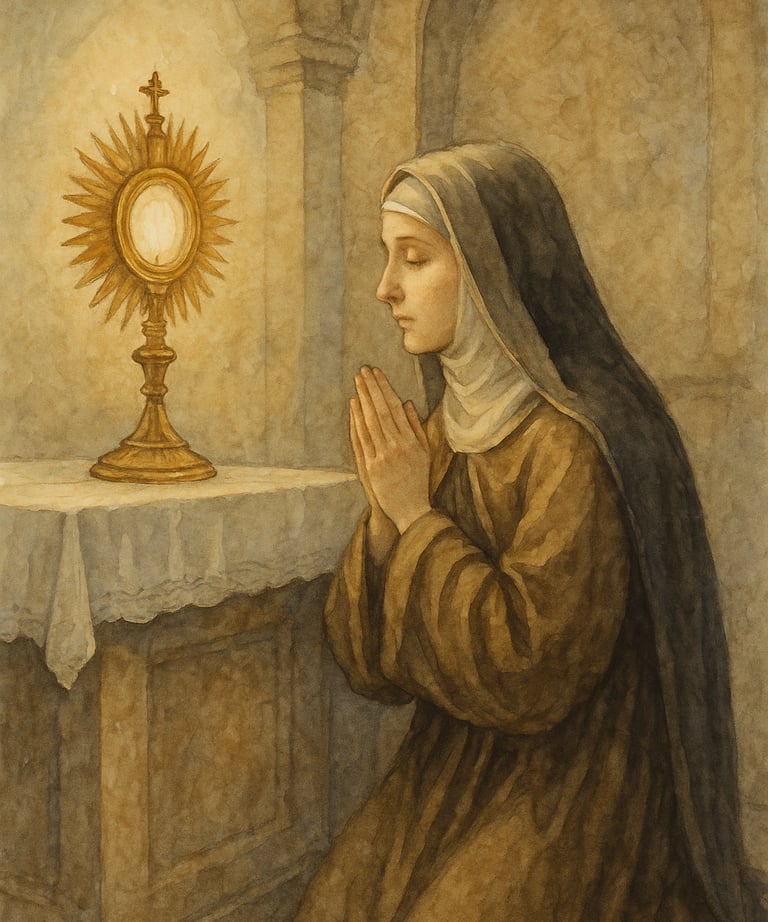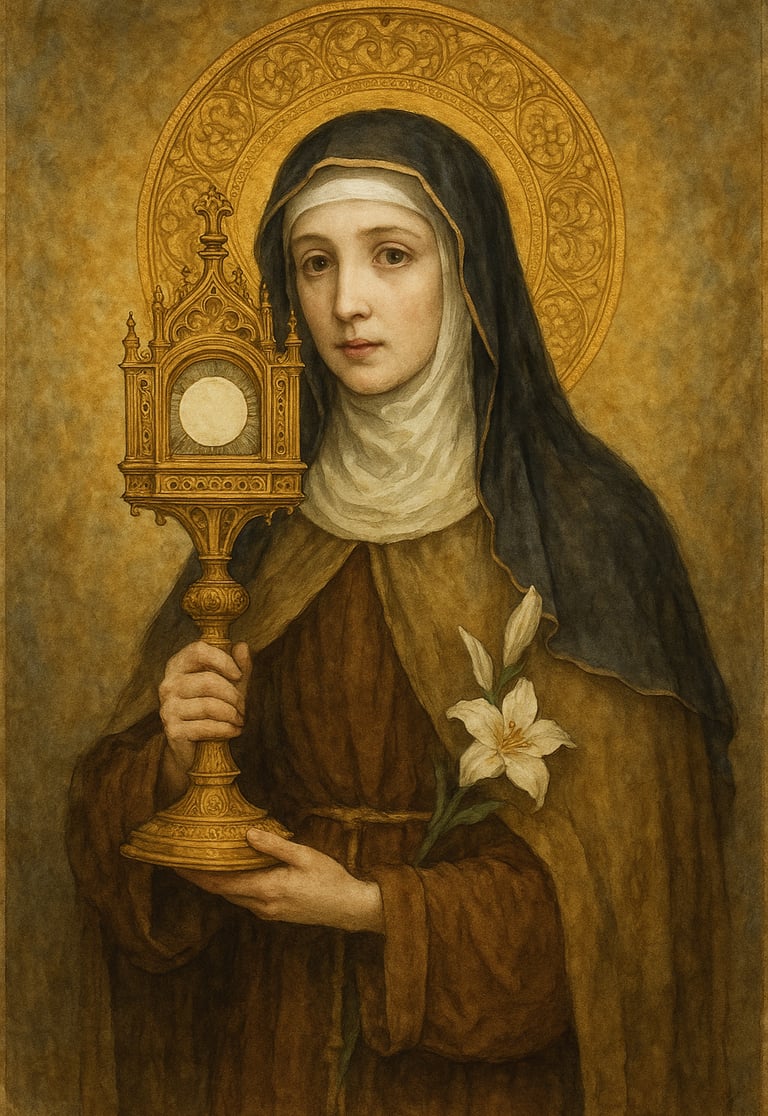St. Clare of Assisi: Bride of Christ, Defender of the Eucharist
Feast Day: August 11 | Patron of: Television, communications, embroiderers, eye disease, goldsmiths, laundry workers
Halo & Light Studios
8/11/20252 min read


Click Link for a reel of Daily Dose of Saints and Faithful Art:
https://youtube.com/shorts/ldcIgkzHf2k
At the turn of the 13th century, the Church was both mighty and troubled. The papacy commanded great influence over kings and nations, yet spiritual laxity had seeped into many monasteries. Bishops and abbots often lived in comfort while the poor suffered. Heretical groups, such as the Cathars, attracted followers by condemning clerical wealth—but their teaching rejected core truths of the faith, including the sacraments.
In this climate, the Holy Spirit raised up reformers—not as rebels, but as faithful witnesses who called the Church back to the Gospel’s purity. Among them was St. Francis of Assisi, whose radical embrace of poverty inspired countless souls. One of those was a noble young woman named Clare Offreduccio.
Born in 1194 to Count Favorino and Lady Ortolana, Clare was raised in luxury but taught by her mother that riches could chain the soul. In Lent of 1212, Clare heard St. Francis preach at San Giorgio. His words cut through her worldly future like a sword.
On Palm Sunday night, she slipped away from her family’s palace. Wearing her finest gown, she walked through the darkness to the little Portiuncula chapel. There, Francis cut her golden hair, clothed her in a rough habit, and bound her with the cord of poverty. The noble daughter became the Bride of Christ.
When her family stormed the convent to drag her home, Clare clung to the altar and refused to leave. Her courage won over her sister Agnes, who soon joined her, beginning the small community at San Damiano.
From the beginning, Clare embraced the strictest poverty, refusing to own property even as a community. This was not stubbornness—it was a theological statement: the Bride of Christ should rely entirely on her Spouse. Even popes tried to relax this discipline for her health and safety, but she refused. In 1253, Pope Innocent IV granted the Privilegium Paupertatis, formally allowing the Poor Clares to own nothing.
Miracles During Her Life
Clare’s sanctity was not hidden—it shone in divine interventions witnessed by her sisters and townspeople.
The Eucharistic Miracle (1240): When Saracen mercenaries sent by Emperor Frederick II advanced toward Assisi, Clare, too weak to stand, had herself carried to the gates. Holding the Blessed Sacrament in a monstrance, she prayed, “O Lord, protect these whom I cannot protect now.” The soldiers halted, terror seized them, and they fled without harm.
Multiplication of Bread: When only half a loaf remained for fifty sisters, Clare blessed it. Miraculously, each received a full portion.
Healings: She made the Sign of the Cross over sick sisters and friars, who recovered. One friar was healed after eating bread she had blessed.
The Christmas Vision: Too ill to attend Midnight Mass, Clare saw and heard the entire liturgy projected upon her cell wall—a vision centuries ahead of “broadcast.” This event led to her being named patroness of television.
After decades of illness, Clare’s final earthly triumph came just two days before her death on August 11, 1253, when her Rule—the first written by a woman for women—was approved by Pope Innocent IV. She was canonized only two years later by Pope Alexander IV.
Her name, Chiara—meaning “clear” or “bright”—is prophetic. Her life is a light for the Church: a witness that reform is not born from tearing down the Bride of Christ, but from loving her more fiercely, living her Gospel more purely, and trusting her Spouse more completely.


